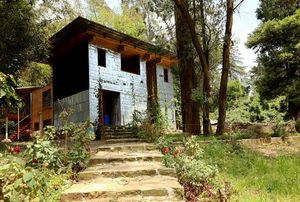Fazit der Kooperation aus den Jahren 2012-2015
Building for the Gap – 1:1 Experimental Housing Units in Addis Ababa
The urban population of Sub-Saharan Africa is expected to grow by almost 70% by 2025. This heavy urbanization naturally evolves a boom in the construction sector. Obviously the current planning methods in building techniques, soft and hard infrastructures and economic cycles are not sufficient enough to lay strong foundations for a sustainable urban and social development. Within a strong academic environment a trilogy of 1:1 prototypal housing units has been fulfilled in the heart of hyper-urbanization: Ethiopia´s capital Addis Ababa.



